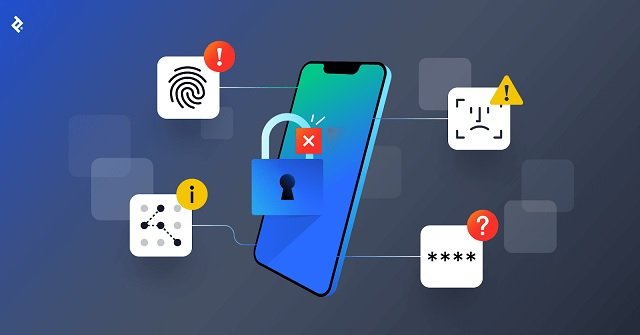Testing AI systems is essential for making sure they work as expected. We check that the models and algorithms are performing correctly by testing AI. This step is important because it helps find and fix issues that could impact accuracy and performance. A reliable test AI system depends on good data, solid models, and smooth integration with other systems.
AI systems are complex, and how they are tested can affect their performance. AI testing tools and testing methods like data validation, accuracy checks, and robustness testing are crucial. These techniques help ensure AI systems provide reliable and fair results in real-world conditions. Thorough testing reduces errors and increases trust in AI technology.
In this blog, let us explore the key testing techniques for AI systems. We will discuss how these methods make test AI more reliable, accurate, and ready for use.
Comprehensive AI Testing Techniques for Reliable and Effective Systems
These techniques play a crucial role in ensuring that test AI systems are functional and fair across various applications.
Data Validation Testing
It ensures that test AI systems use clean, accurate, and consistent data for reliable outputs. It identifies errors in data that could impact the system’s performance.
- Data Integrity Checks: Verifies that data is not corrupted or lost during processing and ensures all inputs meet required formats.
- Duplicate Data Removal: Detects and removes duplicate entries in datasets to avoid skewed results during testing and model training.
- Incomplete Data Handling: Ensures the system can handle missing data appropriately without impacting the overall performance.
- Data Format Validation: Checks that all inputs match the required structure and are compatible with the AI system.
- Real-Time Data Monitoring: Monitors incoming data for errors or inconsistencies during live operations to maintain reliability.
Model Accuracy Testing
It measures how well the test AI system predicts or classifies based on given inputs. It ensures outputs meet expected performance levels.
- Accuracy Metrics Evaluation: Uses precision, recall, and F1 score to measure prediction accuracy.
- Cross-Validation: Splits data into training and testing sets to assess generalization.
- Confusion Matrix Analysis: Identifies true positives, false positives, and false negatives to spot errors.
- Prediction Benchmarking: Compares the model’s performance to baseline or industry standards.
- Error Rate Monitoring: Tracks the percentage of incorrect predictions to ensure consistent improvements in accuracy.
Performance Testing Under Load
It evaluates how well the test AI system performs under high loads. It ensures reliability during peak usage scenarios.
- Load Testing: Simulates high traffic or large datasets to test system capacity.
- Response Time Analysis: Measures how quickly the system processes inputs and delivers outputs.
- Scalability Testing: Ensures the system can scale efficiently as user or data volumes grow.
- Throughput Measurement: Tracks how much data the system can process per second during load testing.
- Cloud Testing Platforms: Cloud-based solutions are essential for scalable and efficient AI testing under high loads.
LambdaTest is a platform that uses AI to make test orchestration and execution easier. It provides access to a cloud with over 3000+ browsers and operating systems, giving you wide test coverage. The platform allows you to monitor test runs in real-time, quickly find issues, and refine your scripts effectively.
KaneAI – Testing Assistant
KaneAI is the first end-to-end software testing agent. It works as a QA Agent-as-a-Service platform, built on advanced Large Language Models (LLMs).
This tool offers a simple way to plan, create, and improve tests using natural language. Designed for fast-paced quality engineering teams, KaneAI automates many parts of the testing process, including creating, managing, and debugging test cases.
With KaneAI, teams can create and update complex test cases easily using natural language, making automation simpler and quicker. It also uses AI to improve test execution and manage test data, ensuring accurate, reliable, and effective software delivery.
Robustness Testing
It ensures the AI system can handle unexpected inputs or extreme scenarios without crashing or producing incorrect outputs.
- Adversarial Input Testing: Provides distorted or misleading data to evaluate how well the model handles such inputs.
- Noise Injection: Adds random noise to input data to test if the model can produce stable outputs.
- Boundary Testing: Checks the system’s behavior when inputs are at their maximum or minimum limits.
- Error Recovery Testing: Tests how the system recovers from failures or incorrect predictions.
- Stress Scenarios: Evaluates system performance under extreme operational conditions to identify weak points.
Bias Detection and Mitigation Testing
It ensures that AI models produce fair results across different user groups. It reduces discrimination risks and improves reliability.
- Demographic Analysis: Assesses how the model performs across various demographic groups like age, gender, and region.
- Fairness Metrics Evaluation: Measures fairness using metrics like disparate impact or equal opportunity to identify biases.
- Synthetic Data Testing: Uses balanced datasets to test if the model treats all categories equally.
- Bias Mitigation Techniques: Applies algorithms to correct biases found during testing and re-evaluates results.
- Audit Trails: Tracks how decisions are made to ensure transparency and fairness while you test AI applications.
Explainability Testing
It ensures that AI systems provide clear and understandable outputs. It helps users and developers trust the decisions made by the test AI.
- Model Interpretation Tools: Uses tools like SHAP or LIME to break down how the test AI arrived at a specific result.
- Feature Importance Analysis: Identifies which input features most influenced the AI’s decision-making process.
- Scenario-Based Testing: Tests outputs for specific scenarios to see if the model provides clear reasoning.
- Audit Logs: Records the decision-making process for future analysis and debugging in AI testing.
Functional Testing of AI Components
It ensures that all components of the AI system work as expected. It validates individual modules before testing the complete system.
- Component-Level Testing: Tests each module, like data preprocessing or model training, to ensure proper functionality.
- Input-Output Validation: Verifies that every component processes inputs correctly and produces accurate outputs.
- Integration Testing: Checks how different modules interact to ensure smooth operation across the system.
- Error Handling: Tests how components manage invalid inputs or processing errors without failing.
- End-to-End Functional Checks: Validates workflows from input to output, ensuring all components are reliable during AI E2E testing.
Integration Testing for AI Modules
It evaluates how test AI modules work together as a system. It ensures seamless interaction between all parts of the system.
- API Interaction Testing: Validates data exchange between modules using APIs to ensure no communication errors occur.
- System Compatibility Checks: Ensures modules work well with existing software and infrastructure.
- Data Flow Validation: Tracks how data moves through the system, ensuring no loss or corruption occurs.
- Cross-Platform Testing: Tests the system across various environments, including cloud platforms, for scalability and reliability.
- Error Propagation Analysis: Evaluates how errors in one module affect the entire system and suggests improvements.
Scalability Testing
It ensures the AI system performs reliably as data volumes and user demands increase. It is crucial for systems expected to grow over time.
- Load Increment Testing: Gradually increases data or user load to identify the system’s maximum capacity.
- Resource Utilization Monitoring: Tracks the system’s use of CPU, memory, and storage under increasing loads.
- Cloud-Based Scalability: Cloud testing platforms ensure the system scales efficiently and handles increased demands during AI testing.
- User Growth Simulation: Simulates more users to test if the system can handle the increase.
- Performance Bottleneck Analysis: Identifies slow areas under heavy load and finds solutions.
Real-Time Output Validation
Real-time output validation checks the accuracy of AI outputs as they are generated. It ensures the system performs reliably in live scenarios.
- Output Accuracy Checks: Verifies that real-time predictions or classifications meet expected standards.
- Latency Measurement: Tracks the time taken to generate outputs to ensure acceptable response times.
- Live Scenario Simulations: Tests the system in real-world conditions to validate its reliability.
- Streaming Data Validation: Ensures the system processes and validates live data streams without errors.
Security and Vulnerability Testing
It ensures the test AI system is safe from attacks and unauthorized access. It also protects sensitive data and maintains system integrity.
- Data Protection Checks: Verifies that the system encrypts and secures sensitive data during storage and transfer.
- Access Control Testing: Ensures only authorized users and systems can access the AI model and its data.
- Injection Attack Testing: Identifies vulnerabilities where malicious inputs could harm the system or alter results.
- Adversarial Attack Testing: Tests how the system handles inputs designed to manipulate or confuse the AI.
- Audit Trails for Security: Maintains logs to track all activities and ensure traceability for debugging and compliance.
Stress Testing for Edge Cases
Stress testing pushes the AI system to its operational limits to identify weak points. It ensures the system can handle extreme scenarios.
- Maximum Load Simulation: Tests how the system performs under its maximum data or user capacity.
- Extreme Input Scenarios: Evaluates how the system handles rare or highly unusual input conditions.
- Performance Under Resource Constraints: Tests the system with limited resources like low memory or CPU power.
- Scenario-Specific Stress Tests: Simulates situations like network disruptions or hardware failures to evaluate reliability.
Regression Testing for AI Models
It ensures that new updates or changes do not affect the existing functionality of the AI system. It maintains system reliability.
- Retesting Previous Scenarios: Executes previously tested cases to ensure consistent results after changes.
- Version Comparison: Compares outputs from the updated model with the previous version to detect differences.
- Data Compatibility Checks: Ensures the model still performs accurately with older datasets.
- Impact Analysis: Identifies areas where changes may have unintended consequences on model performance.
- Continuous Regression Testing: Runs tests regularly to maintain reliability throughout the development lifecycle.
User Acceptance Testing for AI-Driven Outputs
It ensures that the AI system validates real-world usability.
- User Scenario Testing: Simulates real-world use cases to see if the AI system delivers accurate and useful results.
- Feedback Collection: Collects user input to find improvement areas and ensure satisfaction.
- Usability Evaluation: Tests how easily users interact with the system and understand its results.
- Output Validation: Ensures the AI’s predictions meet user expectations and needs.
- Training and Support Testing: Verifies that users receive adequate resources to understand and use the AI system effectively.
Conclusion
In conclusion, testing AI systems is a continuous and essential process to ensure they perform well in different environments. Advanced testing techniques like data validation and user acceptance testing help catch potential issues before they become major problems. These methods also support improvements in system performance, fairness, and security.
Using these thorough testing methods becomes crucial with the advancement of AI technology. This ensures that AI delivers accurate, fair, and secure results for users across different industries.



